Nakayama is in between Narita And Haneda International Airport
<クッキーについての同意並び欧州居住者向けプライバシーポリシー>
中山・下総・散歩道
Terauchi Myoken Jinja Shrine and Cherry Blossoms
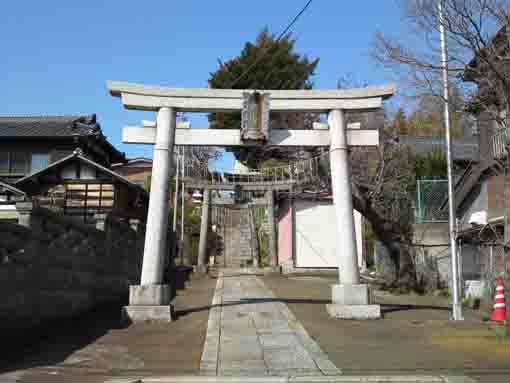
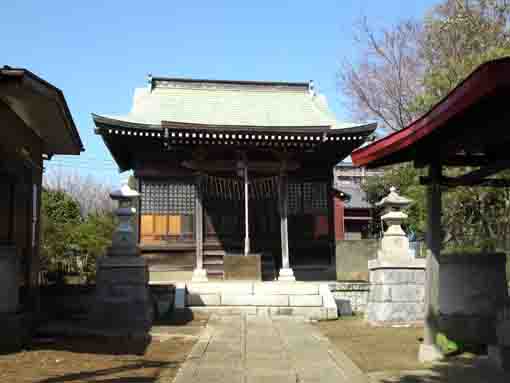
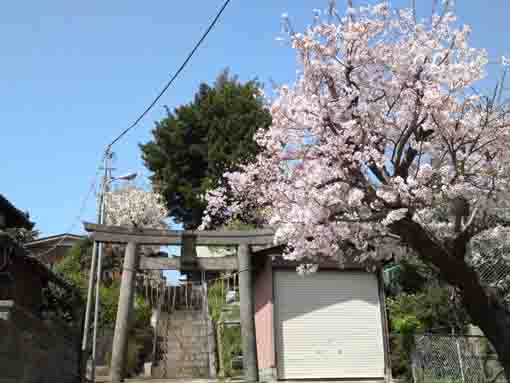
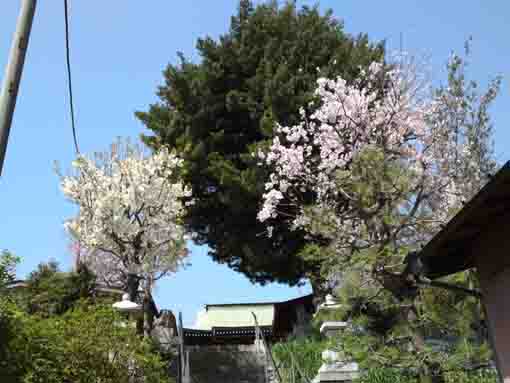
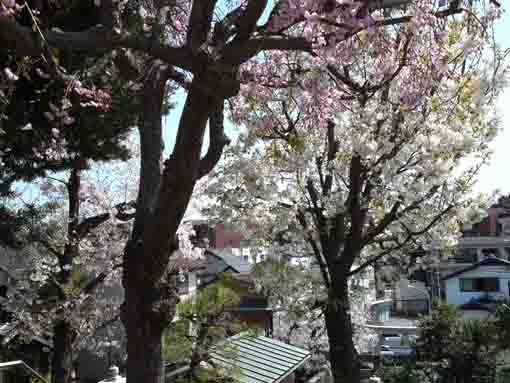
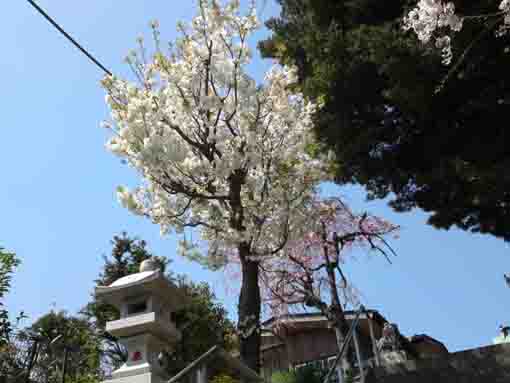
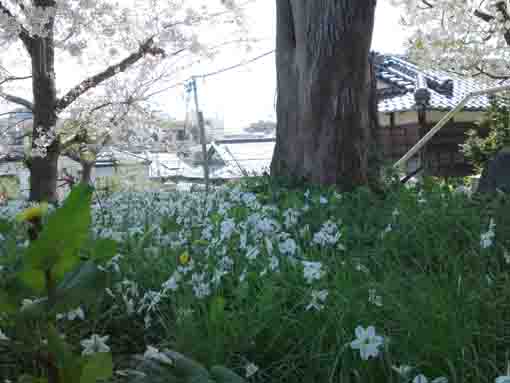
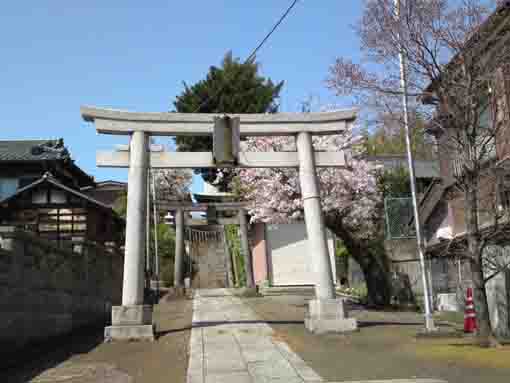
Terauchi Myoken Jinaja Shrine is a small old shrine standing on a small hill in the residential area spreading in the low hilly areas of Katsushika in the western Funabashi City in Chiba prefecture. According to an old history and guide book 'Katsushika Shiryaku', this shrine is a branch shrine of Chiba Myoken Jinja Shrine is built as the guardian deity of Terauchi area. And it was built over 500 hundred years ago since the signboard beside the gate put in 1961 tells that an old pine tree dead recently was over 500 years old tree, and Kafu Nagai, a famous writer, visited it in Febraury 2nd of 1946 and told it in his diary 'Danchotei Nichijo' that he had seen an old large pine tree. That large pine tree might be the symbol of this shrine. Though there are no pine trees, a large greenish hackberry on the top of stone steps looks like telling the place of this shrine. And some cherry trees in the site blooming in spring welcome visitors gently. Why don't you visit Terauchi Myoken Jinja Shrine?
Terauchi Myoken Jinja Shrine
Terauchi Myoken Jinja Shrine
Ameno Minakanushi no Kami is dedicated in the shrine.The land where this shrine is standing were rice fields in several decades ago, and it had been a coop with white sand and beautiful pine trees in thousand years ago. On the plateau around it, people have lived since the classic ages.
The area has been called Terauchi, it was in between Hongo in the westand Innai in the east, they were independent villages in each. These villages begun since Kamakura Period. Innai means 'in the temple' and Terauchi has the same meanings, so they were in each temples' lands.
The deity in this shrine is appeared on the first volume of Kojiki (Japanese oldest History Book), he is the god of the creation. And he is also called Myoken Taishin (Myoken the Great) since he is the god of Polar Star, itis called Hokushin Myoken in Japan. He is the god of childbirth, children, study, business and avoiding evil directions.
Myoken was believed by Chiba Family in Shimousa and the family gained power in the Middle Ages, and charitable men in this area built this shrine and dedicated Myokensama as the guardian deity of the village at that time. A old pine tree in the shrine dead recently had been over 500 year old and it showed how old Myoken Jinja could be.
According to the first part of Funabashishi-shi (the history of Funabashi), Terauchi Myoken Jinaja Shrine is only the shrine that uses the god's name on its own name even though there were some small Myoken Shrine in each village in the western Funabashi area near it such as Futago, Hongo, Nishi Kaijin. That tells that it has long history.
The main hall of it was built in late Edo period. And the hall, the office, the washbasin, the Komainu Dogs, the stone lumps, the Torii Gate, the stone steps and the approach road in it was repaired by the supporters in 1972.
The annual festival is held in October 9th, and Niiname Festival is in late November.
It is the wonderful year of Showa 60, so we write this record of Terauchi Myoken Jinja Shrine.
The Fine day in November of 1986.
By the Chief Priest and the Supporters of Terauchi Myoken Jinja Shrine.
寺内妙見神社前案内板より
The Memorial Tablet For Building Myoken Jinja Shrine
Terauchi Myoken Jinja Shrine that is to say a branch shrine of Chiba Myoken Jinja Shrine has been believed as the guardian deity of this village since people had lived around it. However, it has been repaired for a long time and the supporters of the shrine discussed and founded a committee to rebuild it. Now all supporters agreed and started rebuilding it. In May 8th of1972, the ceremonies of purifying the site and moving the deity while the reconstruction of the site were held and the topping out ceremony was in July 31st. The reconstructiing work is in progress rapidly, the main hall, the office, the washbasin, the Komainu Dogs, the stone lumps, the Torii Gate, the stone steps and the approach road were newly rebuilt. In December 26th, the ceremony of moving the deity to the new shrine was held and the work was completed.This is scribed on the stone tablet to respect the mighty power and to progress the town.
The fine day in December 1972.
By the Chief Priest and the Chief of the Supporters of Terauchi Myoken Jinja Shrine.
妙見神社造営記念碑銘文より
出典・抜粋・引用および参考
寺内妙見神社前案内板
妙見神社造営記念碑銘文
新版 断腸亭日乗 第六巻 岩波書店
房総叢書 : 紀元二千六百年記念. 第6卷葛飾誌略
The Location and Access to Terauchi Myoken Jinja Shrine
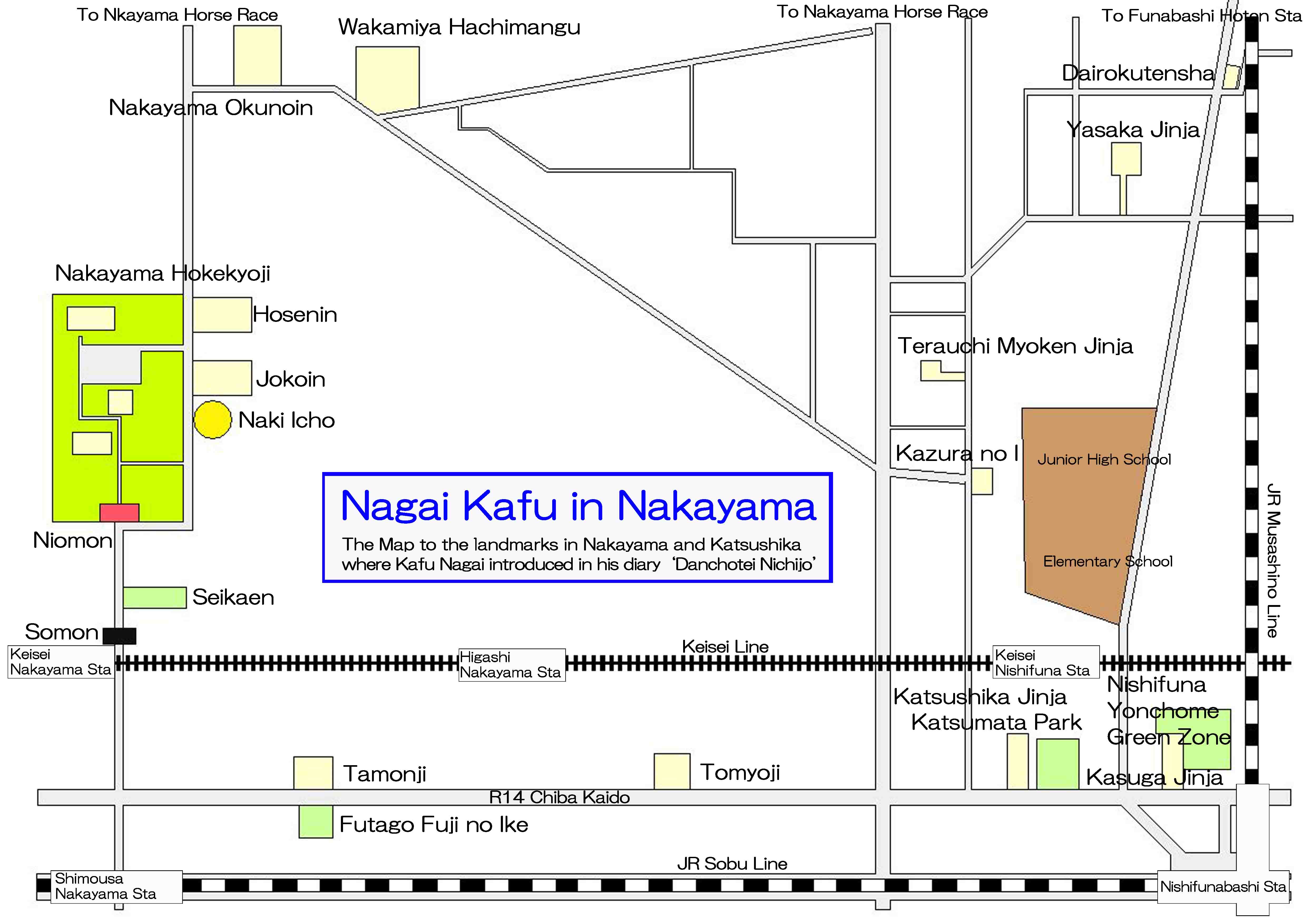
The map to the landmarks where Kafu Nagai introduced in his book
PDF of the map of the noted spots where Kafu Nagai visitedTerauchi Myoken Jinja Shrine
- Terauchi Myoken Jinja Shrine has great accessibilities from both Narita and Haneda International Airport.
- From Narita International Airport, take Keisei-line and get off Keisei Nishifuna Sta or Higashi Nakayama Sta, take minimally 40 minutes from Narita Airport. And also take JR Sobu express line, transfer the line at Funabashi to Sobu Local line, get off Nishi Funabashi Sta.
- From Haneda International Airport, take Keikyu-line bound to Narita, and get off Keisei Nishifuna Sta or Higashi Nakayama Sta.
- From Tokyo Sta, take Sobu Express line bound to Chiba or Narita, transfer the line to Sobu-Local line bound to Chiba, Tsudanuma, or Nishi Funabashi at Ichikawa Sta, get off Nishi Funabashi Sta.
- From Akihabara Sta, take Sobu line bound to Chiba, get off Nishi Funabashi Sta.
- Take 7 minute walk from Keisei Nishifuna Sta, take 9 minute walk from Higashi Nakayama Sta, and take 15 minute walk from Nishi Funabashi Sta.
- 7-3-30 Nishifuna, Funabashi-shi, Chiba-ken
The Landmarks Neighbor Of Terauchi Myoken Jinja Shrine
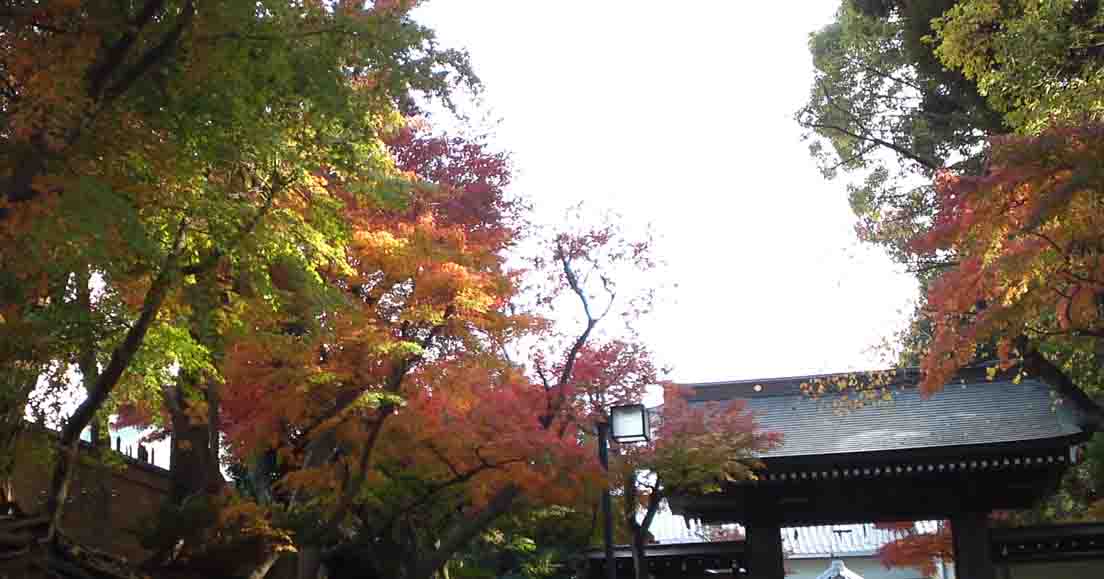
Tacchue Temples and the Branch Temples in Nakayama Hokekyoji
Some of the tacchu temples are introduced in this page.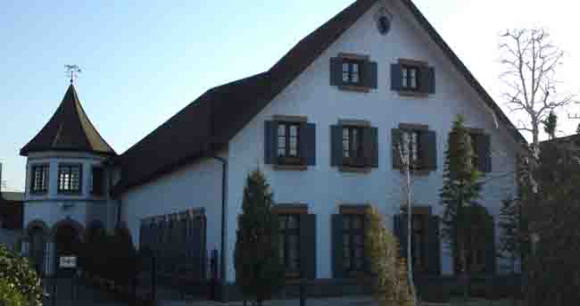
Higashiyama Kaii Memorial Hall
This small gallary has wonderful works of the great painter Kaii Higashiyama lived in Nakayama.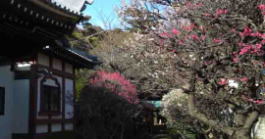
Nakayama Oku-no-in
Nichiren had preached first time at the Oku-no-in. Later, Jonin Toki built a temple named 'Hokke-ji'. There are several ume trees blooming beautiful ume blossoms in spring silently.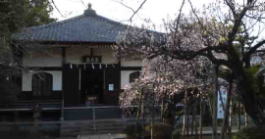
Onju-in Temple
Onjuin Temple is famous for the temple to deliver the Nichiren Sect's traditional style of ascetic practices. Tokugawa, Maeda and many people faithfully has believed for ages.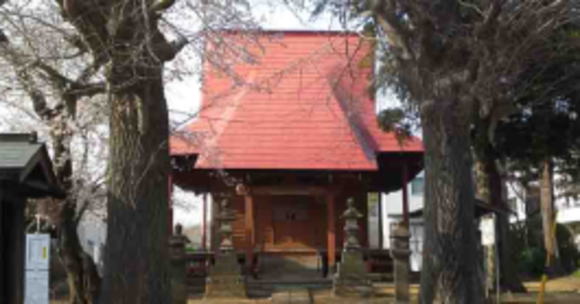
Fujiwara Kannondo Hall
Fujiwara Kannondo Hall has the legend of the great swordsman Mushashi Miyamoto, sometimes it was his hideaway.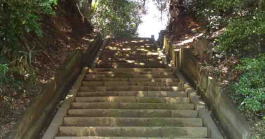
Shogyoji Temple
It preserves the seated statue of Nichiren and Yosobei Kajikawa's mementoes. It also has the side story of The Forty-Seven Ronins.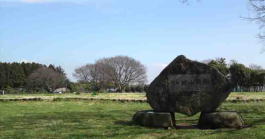
Ubayama Shell Mound
This shell mound designated as the National Historic Site and was formed from middle to late Jomon period.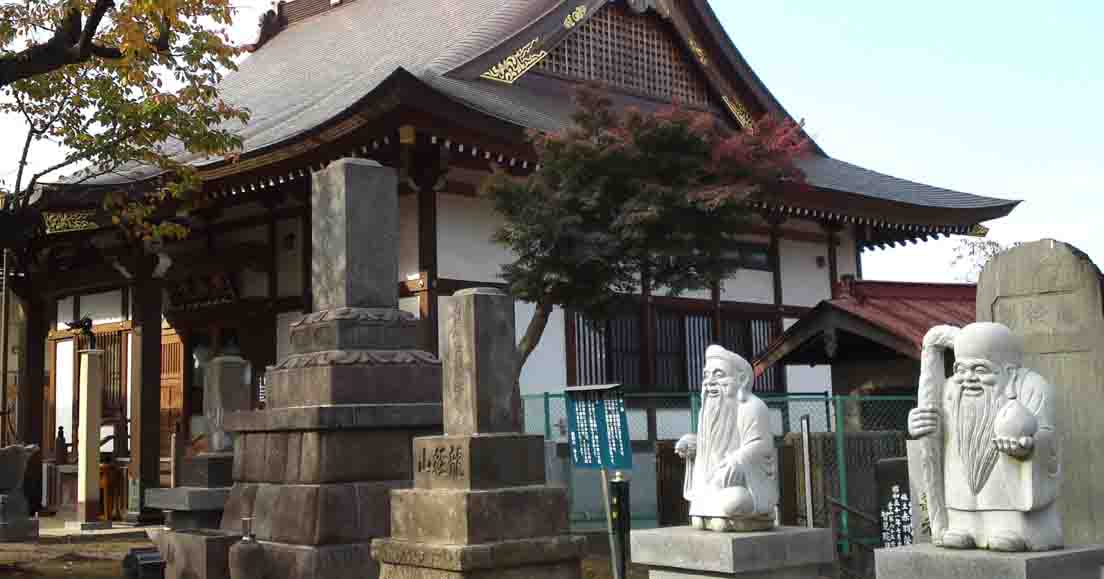
Ryukyosan Myoshoji Temple
The sacred temple covered with holy cherry trees is famous for the legend of Seven Sutra Mound and Shichifukujin in Ichikawa.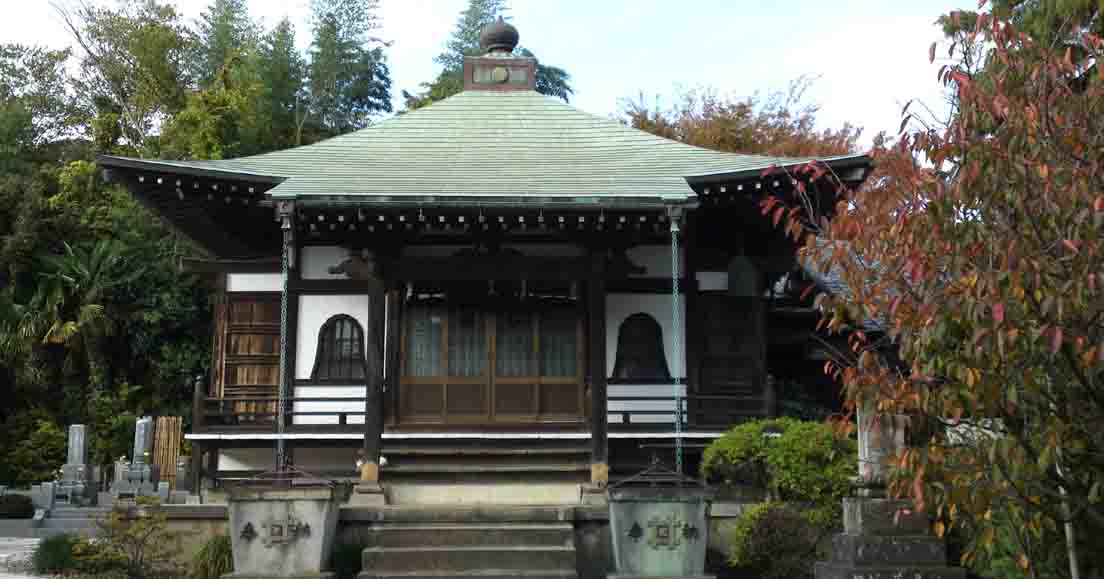
Homensan Anrakuji Temple
The first nunnery of Nichiren Sect built by the Princess Tokiwai, the legend said ther daughter of the Emperor drifted to Ichikawa.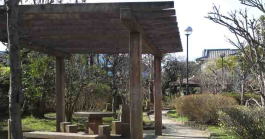
Seikaen Garden
A peaceful place to rest on the way to Nakayama Hokekyoji Temple is Seikaen. It has the branch office of the city hall.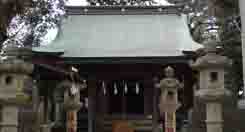
Awa Jinja Shrine
It has the legend of the young samurai Hirotsugu Satomi.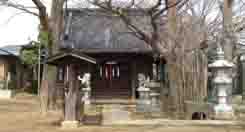
Takaishigami Jinja Shrine
The shrine related to the battles of Konodai in Sengoku Period.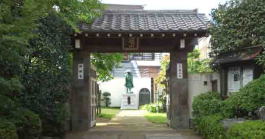
Shinmeisha Shrine and Shinmeiji Temple
They have their long history and the legend of Oguri Hangan.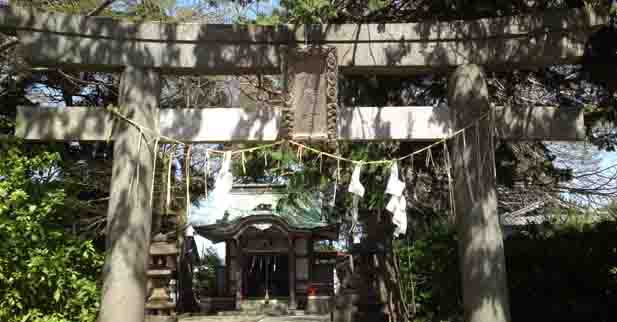
Wakamiya Hachimangu Shrine
A small shrine relates to the Founder Nichiren, Nichijo and the Prince Yamato Takeru.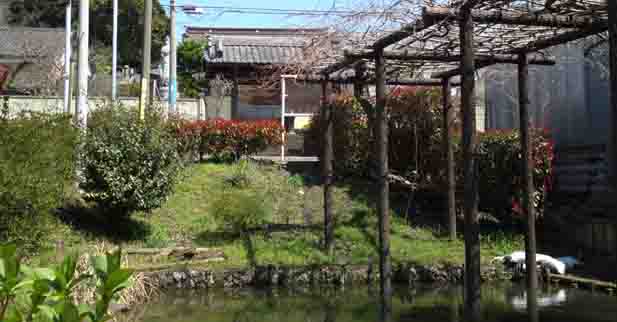
Tamonin Temple and the Futago Fuji Pond
They are related to the Founder Nichiren.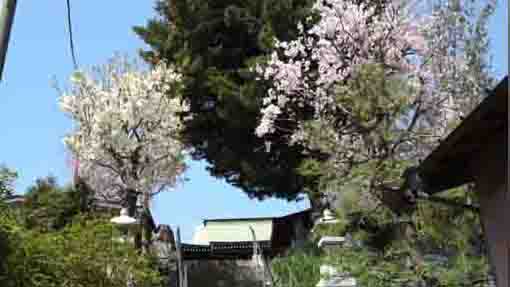
Myoken Jinja Shrine in Terauchi
This shrine is the guardian deity of this town and Kafu Nagai, a famous writer, had visited.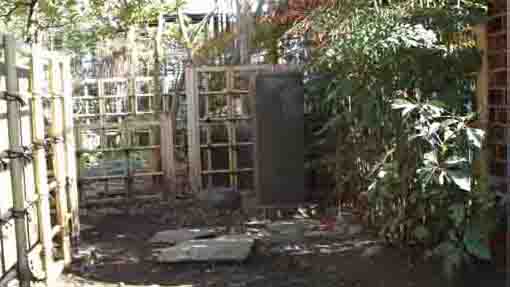
Kazura no I well in Katsushika
A well became famous as Kafu Nagai introduced in his essay.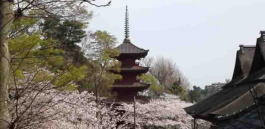
Nakayama Hokekyoji Temple
Visitors could enjoy seeing cherry blossoms and cultural properties.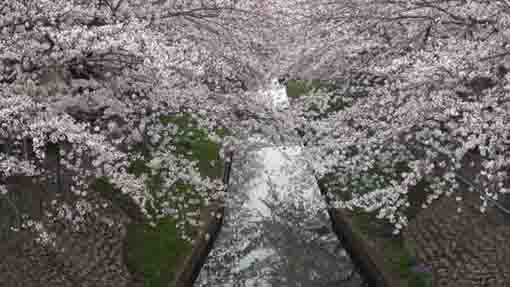
Cherry trees along Mamagawa River
The Mama-gawa River is the very famous spot to enjoy seeing the blooming Cherry Blossoms.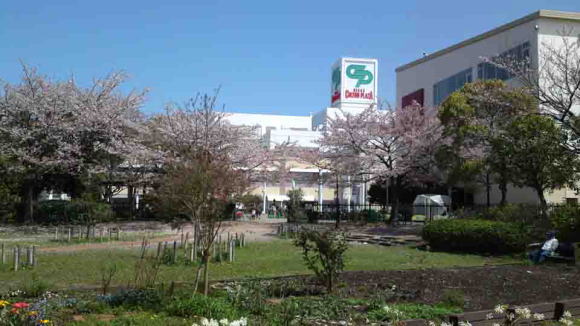
The Area Around Nikke Colton Plaza
Nikke Colton Plaza and some landmarks around are attractive and exciting to walk on.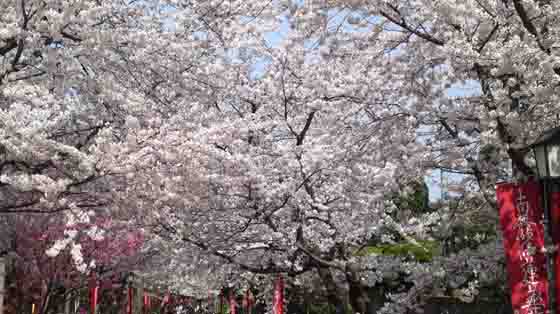
The Popular Viewing Sakura Spot / Nakayama Hokekyoji Temple
It is very popular viewing sakura spot and thousands of people visit and enjoy seeing sakura.- 広告 Advertisement -
